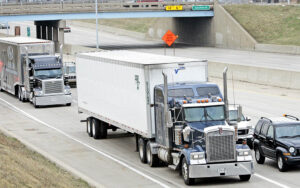WASHINGTON — The U.S. workplace safety regulator has finalized a rule opposed by business groups that will require employers in scores of “high hazard” industries to electronically submit detailed data on worker injuries.
The U.S. Occupational Safety and Health Administration (OSHA) published a final rule similar to one that was adopted by the Obama administration and then largely rolled back under former Republican President Donald Trump before it could take effect.
The rule, which takes effect Jan. 1, 2024, requires companies with 100 or more employees in industries that OSHA deems hazardous to annually submit forms including details of specific safety incidents.
Employers are already required to keep records of injuries, but they are only submitted to OSHA if the agency conducts an investigation.
A wide range of industries are covered by the rule including grocery stores and other retail businesses, trucking and transportation, agriculture, manufacturing, nursing homes, waste collection and delivery services. OSHA said it designated industries as hazardous if they averaged at least 3.5 injuries per 100 full-time employees between 2017 and 2019.
Doug Parker, the head of OSHA, in a statement said the agency will use the data to inform outreach and enforcement efforts designed to reduce worker injuries and illnesses.
“The safety and health community will benefit from the insights this information will provide at the industry level, while workers and employers will be able to make more informed decisions about their workplace’s safety and health,” Parker said.
But Ben Brubeck, vice president of construction trade group Associated Builders and Contractors, said the rule will do nothing to achieve those goals while forcing employers to disclose sensitive information that can be mischaracterized and misused.
Labor unions, for example, could use the data to make “false or distorted claims” about worker safety, he said in a statement.
Brubeck said that because the records required by the rule involve isolated incidents, they “are not reliable measures of a company’s safety record or of its efforts to promote a safe work environment.”
OSHA in the rule said it will not collect employee names and addresses or the names of healthcare professionals and facilities.














I’m in total agreement with this new regulation. I drove a semi. in the grocery industry and averaged an injury routinely, and a broken bone about every 5 years. Broken hand, rib, wrist, & jaw (with 7 teeth.). The hand was a packing change I was not told about. The rest were from bad or no repair on broken & worn out equipment (Until some one got hurt really bad that is.). The grocery industry operates in the 1920’s not the 2020’s. I was not an exception. The grocery industry NEEDS some serious over-site.